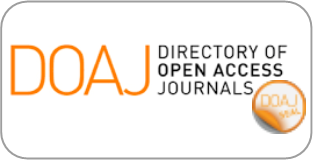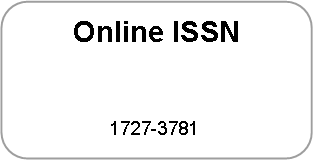Mapping the Common Law Development of Physician- Administered Euthanasia and Physician-Assisted Suicide against the Background of the Application of the Bill of Rights
DOI:
https://doi.org/10.17159/1727-3781/2023/v26i0a14300Keywords:
Common law development, Bill of Rights, physician assisted suicide, physician assisted euthanasiaAbstract
The Pretoria High Court is considering whether to recognise a right to physician-assisted death. This is a right to request a physician to administer a lethal prescription which a terminally ill patient can use to end their lives or to be allowed to obtain a lethal prescription which they will self-administer. In deciding the matter, the court will have to determine whether it should remove the common law prohibition on both ways of bringing about a quick and painless death. The question that will have to be answered is whether the common law prohibition is consistent with the Constitution. If it is not, the court will either develop the common law or leave it to Parliament to remove the inconsistency. However, before the court can begin this work it would have to decide on the correct approach to the application of the Bill of Rights to the common law principles of murder and culpable homicide. In effect it would have to decide how sections 8(1), 8(3) and or section 39(2) of the Constitution apply to the dispute.
This research explores how these operational provisions should apply when assessing the constitutionality of the right to physician-assisted death. In effect it argues that during this process the court must always have regard to section 39(2), irrespective of whether there is a direct application or an indirect application of the Bill of Rights to the common law. Its application arises under section 8(1), where the court is asked to declare the common law invalid on the basis of being in direct violation of a constitutional right. It also applies in situations where the court is asked to develop the common law under section 8(3). Lastly, it is applicable where the common law is challenged for being in indirect conflict with the spirit, purport and object of the Constitution. Having established the role of section 39(2) in both the direct and indirect application of the Bill of Rights, the paper concludes by critically analysing the remedies that attend each of the operational provisions in relation to the common law prohibition on physician-assisted death.
Downloads
References
Bibliography
Literature
Bhana ‘The horizontal application of the Bill of Rights: A reconciliation of sections 8 and 39 of the Constitution 2013 SAJHR 352-375. DOI: https://doi.org/10.1080/19962126.2013.11865078
Burchell J Principles of Criminal Law 5th ed (Juta Cape Town 2016)
Brickhill J, Du Plessis, and Penfold M Constitutional Litigation (Juta Cape Town 2013)
Chirwa D ‘The horizontal application of constitutional rights in a comparative perspective’ 2006 Law, Democracy & Development 21-48.
Cheadle C and Davis D South African Constitutional Law: The Bill of Rights (LexisNexis Durban 2002)
Cornell D and Friedman N ‘In defence of the Constitutional Court; human rights and the South African common law’ 2001 MLJ 1-31
Davis D ‘Where is the Map to Guide Common-Law Development’ 2014 STELL LR 3-14
Currie I and De Wall J The Bill of Rights Handbook 6th ed (Juta Cape Town 2013)
Dersso A ‘The role of the courts in development of the common law under s 39(2): Mayisa v Director of Public Prosecutions Pretoria (The State) and Another CCT Case 54,06 (10 May 2007)’ 2007 SAJHR 373-385 DOI: https://doi.org/10.1080/19962126.2007.11864926
Leinius B and Midgley JR ‘The impact of the Constitution on the law of delict: Carmichele v Minister of Safety and Security’ 2002 SALJ 17-27
Michelman FI "Expropriation, Eviction, and the Gravity of the Common Law" 2013 Stell LR 245-263 DOI: https://doi.org/10.2139/ssrn.2116643
O'Regan K "The Best of Both Worlds? Some Reflections on the Interaction between the Common Law and the Bill of Rights in our New Constitution" 1999 PELJ 1-20
Price A "The Influence of Human Rights on Private Common Law" 2012 SALJ 330-374
Price A "Factual Causation after Lee" 2014 SALJ 491-500
Quinot G ‘The right to die in American and South African Constitutional law’ 2004 CILSA 139-172
Rall A "The Doctor's Dilemma: Relieve Suffering or Prolong Life" 1977 SALJ 40-54
Ramosa R "The Limits of Judicial Law-Making in the Development of Common-Law Crimes: Revising Masiya" 2009 SACJ 353-370
Rautenbach IM ‘Introduction to the Bill of Rights’ in Anonymous Bill of Rights Compendium [Issue 29] (LexisNexis Durban 2011) 1A1-1A104
Roederer C "Law of Delict" 2000 Annu Surv SA L 281-359
Roederer C ‘Working the Common Law Pure: Developing the South African Law of Delict (Torts) in Light of the Spirit, Purport and Objects of the South African Constitution’s Bill of Rights’ 2009 Arizona Journal of International and Comparative Law 428-503
Roederer C ‘Post-Matrix Legal Reasoning: Horizontality and the Rules of Values in South African Law’ 2003 SAJHR 53-81 DOI: https://doi.org/10.1080/19962126.2003.11865172
Snyman CR "Extending the Scope of Rape – a Dangerous Precedent" 2007 SALJ 677-687
Van Der Walt AJ ‘Development of the Common Law of Servitude’ 2013 SALJ 722-756.
Van der Walt JC and Midgley JR Principles of Delict 4th ed (LexisNexis Butterworths Durban 2016)
Woolman S "The Amazing, Vanishing Bill of Rights" 2007 SALJ 762-794
Woolman S ‘Application under the Final Constitution: Burdens of the Bill of Rights’ in Woolman S and Bishop M (eds) Constitutional Law of South Africa 2nd ed (Juta Cape Town 2014) Ch3,1-161
Case law
South Africa
AB v Pridwin Preparatory School 2020 5 SA 327 (CC)
Bel Porto School Governing Body v Premier, Western Cape 2002 3 256 (CC)
Carmichele v Minister of Safety and Security 2001 4 SA 938 (CC) DOI: https://doi.org/10.1016/S1361-3723(01)01107-1
Castell v De Greeff 1994 4 SA 408 (C) 420J.
Clarke v Hurst 1992 4 SA 630 (D)
Du Plessis v De Klerk 1996 3 SA 850 (CC)
K v Minister of Safety and Security 2005 6 SA 419 (CC)
Khumalo v Holomisa 2002 5 SA 401 (CC)
Member of the Executive Council for Health and Social Development, Gauteng v DZ 2018 1 SA 334 (CC)
Minister of Justice and Correctional Services v Estate Stransham-Ford 2017 3 SA 152 (SCA)
Mokone v Tasso Properties 2017 5 SA 456 (CC)
National Coalition for Gay and Lesbian Equality v Minister of Justice 1999 1 SA 6 (CC)
Petersen v Maintenance Officer 2004 2 SA 54 (C) DOI: https://doi.org/10.1111/j.1875-595X.2004.tb00008.x
Pharmaceutical Manufacturers of South Africa: In re ex parte President of the Republic of South Africa 2000 2 SA 674 (CC)
Qozoleni v Minister of Law and Order 1994 3 SA 625 (E)
Thebus v S 2003 6 SA (CC)
Stransham-Ford v Minister of Justice and Correctional Services 2015 4 SA 50 (GP)
S v Makwanyane 1995 3 SA 391 (CC)
S v Williams 1986 4 SA 1188 (A)
Shabalala v Attorney-General, Transvaal 1996 1 SA 725 (CC)
Walters v Minister of Health (judgement pending) case number 31396/2017
England
Kleinwort Benson Ltd v Lincoln City Council 1999 2 AC 349
Re T [1992] ALL ER 649
Legislation
Magistrates’ Court Act 32 of 1994
The Constitution of the Republic of South Africa 200 of 1993
Internet sources
Health Professions Council of South Africa September 2016 Guidelines for the Withholding and Withdrawing of Treatment https://www.hpcsa.co.za accessed 10 April 2021
Published
Issue
Section
License
Copyright (c) 2023 Ntokozo Mnyandu

This work is licensed under a Creative Commons Attribution 4.0 International License.
















.png)